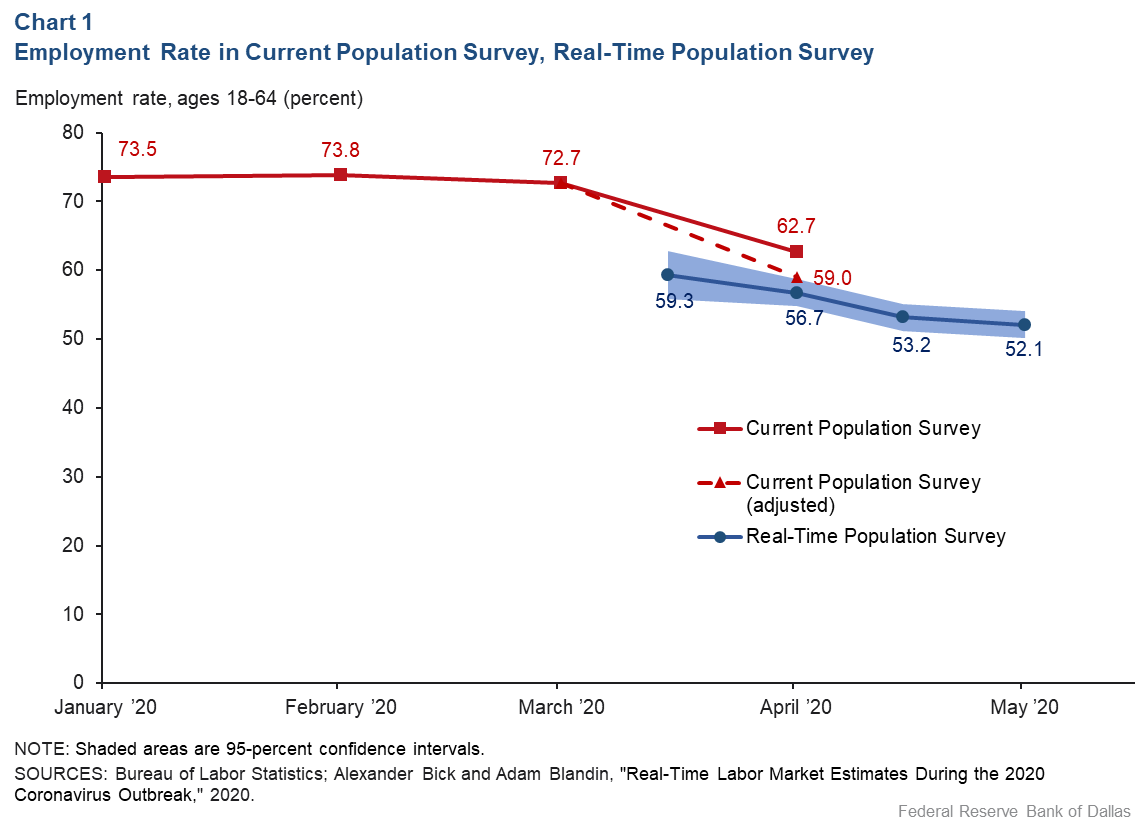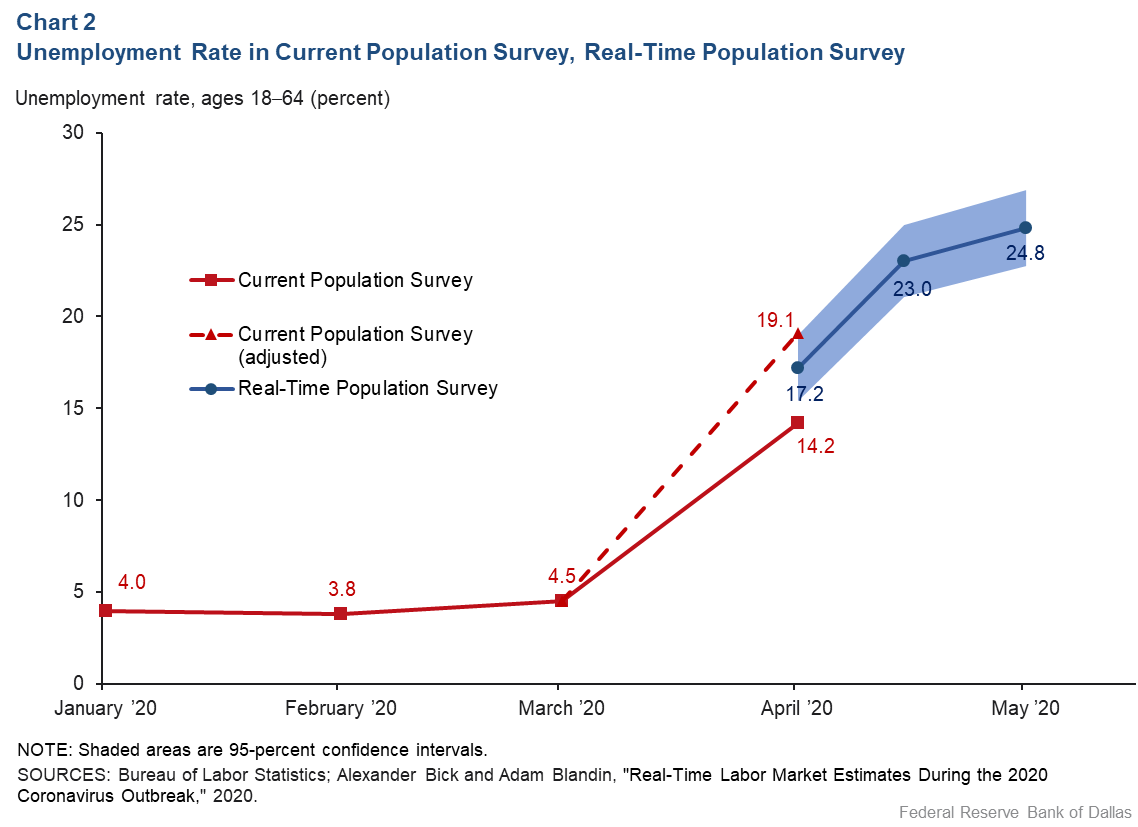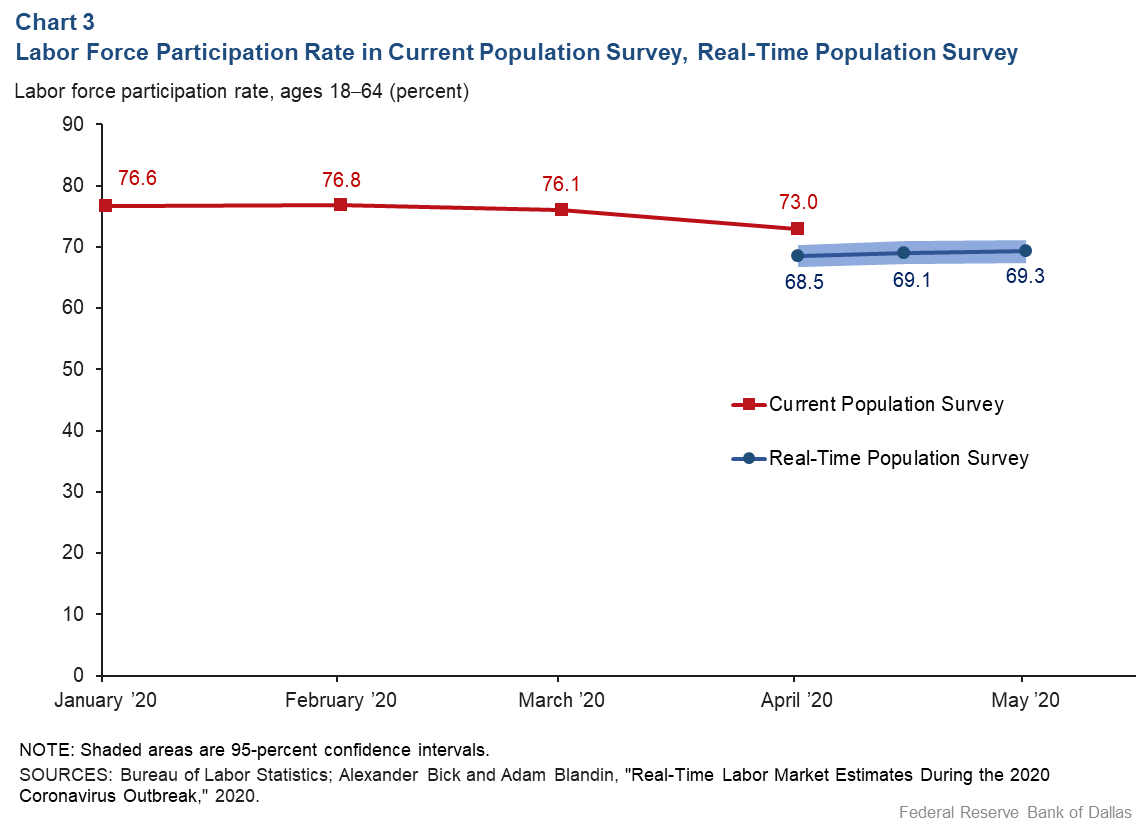
U.S. Economy
Real-Time Population Survey (RPS)
May 22, 2020
Employment Rate Ticks Lower
- The employment rate for working-age adults (18–64) was 52.1 percent in the RPS for the week of May 10–16 (Chart 1). While the employment rate decreased relative to the estimate of 53.2 percent for the week of April 26–May 2, the change was not statistically significant.
- In mid-April, the employment rate of 56.7 percent in the RPS was below the most-recent Current Population Survey (CPS) estimate of 62.7 percent for working-age adults (18–64). However, the Bureau of Labor Statistics, which draws on the CPS for its unemployment rate report, estimates that more than 7 million individuals “with a job but absent from work because of the coronavirus” were misclassified as employed during the CPS interviewing process.
In contrast, the RPS did not record an unusually high number of persons not at work, suggesting that the same misclassification did not occur. Reclassifying the individuals absent from work in the CPS survey as suggested by the BLS leads to an adjusted employment rate among working-age adults of 59.0 percent the week of April 12–18. This is much closer, but still substantially above the RPS estimated employment rate.

Unemployment Rate Rise Statistically Insignificant
- The unemployment rate in the RPS was 24.8 percent for the week of May 10–16 (Chart 2). While unemployment increased relative to the estimate of 23.0 percent for the week of April 26–May 2, the change was not statistically significant.
- In mid-April, the unemployment rate of 17.2 percent estimated in the RPS is between the official CPS estimate of 14.2 percent and the alternate estimate of 19.1 percent after reclassifying all those “absent from work because of the coronavirus’’ as unemployed.

Labor Force Participation Remains Near Multi-Decade Low
- The labor force participation rate was 69.3 percent in the RPS for the week of May 10–16 (Chart 3). The labor force participation rate was essentially unchanged in the most recent RPS survey and remained near the lowest participation rates for individuals ages 18–64 since at least 1962.
- In mid-April, the RPS participation rate estimate of 68.5 percent fell below the CPS estimate of 73.0 percent. The April CPS may understate the true decline in participation from March because of its misclassification of individuals as employed, which in turn automatically counted them in the labor force. Depending on what fraction of individuals would have reported being unavailable for work had they been asked, the official labor force participation rate would have been between 69.4 percent and 73.0 percent.

RPS Authors
The RPS was developed by Alexander Bick, an associate professor at WP Carey School of Business at Arizona State University; Adam Blandin, an assistant professor in the Department of Economics at Virginia Commonwealth University; in collaboration with Karel Mertens, a senior economic policy advisor in the Research Department at the Federal Reserve Bank of Dallas.